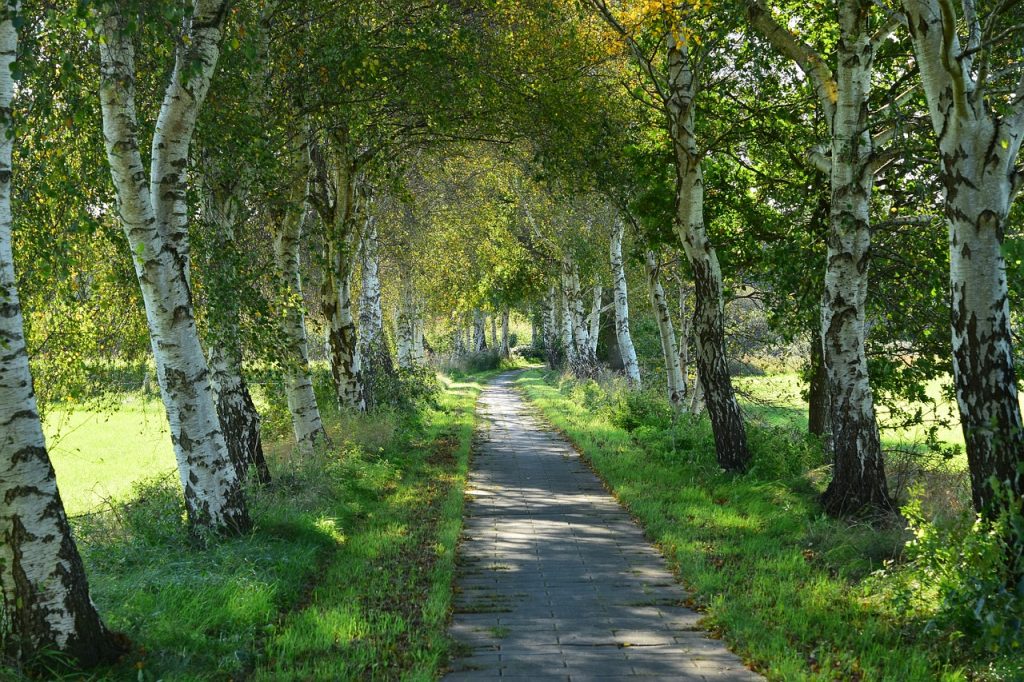Fall is for Planting!
Trees are a fundamental element of any landscape plan. The proper position, selection, and placement can set the stage for the entire home landscape design. Trees are the most permanent plants we grow. Most will live for 50 years or more. Because they are such a long-lasting addition to the landscape, special care should be taken when selecting and planting trees in the landscape.
Function of Trees
Shade-Trees are most often planted to provide shade. When considering placement, keep in mind that you will want to provide protection from the afternoon sun. therefore situate your shade tree planting near the southwest corner of the house. Trees are the ultimate air conditioners. They will shade as well as cool the air passing through the branches through transpiration.
Framing-In addition to providing shade, trees also serve other functions. They can frame the house on the property. Select trees that will fit in proportion to the house. You can achieve dramatic effects by understanding your options. A large, two story house framed with smaller trees appears larger. Using low flat trees can lend an appearance of spaciousness. These trees are usually planted on an angle diagonal from the front corners of the house. This gives the lot an appearance of depth more than when trees are planted directly out to the sides. Juxtapose different varieties in odd numbers that are planted at irregular depths.
Background-By planting trees as a backdrop to the house you will effectively soften the roof lines and make the house standout on the property. Consider the heights of the selected trees so that the tops of the trees will be seen above the roof line at maturity. Maples, such as Acer Rubrum “October Glory”, plus A Rubrum “Red Sunset”, as well as Sugar Maples and Oaks are good choices for background plantings.
Accent-Small trees with attractive flowers, berries, leaves or bark are often used to provide distinctive touches to the landscape design. These trees, often referred to as specimen trees, should be used sparingly. However, they are often used to direct the eye towards areas of interest, such as the front entrance, around a pool or patio, or at the end of a walkway or path. Just about any landscape will benefit from the proper use of an accent tree. A few excellent examples of an accent tree would be Magnolia Stellata “Royal Star”, Cornus Kousa and Stewartia Pseudocamellia.
Attributes of Trees
Size:Trees for use in the landscape are usually classified as small, medium, or large. An example of a small tree might be a Malus, or Crabapple. These small trees add interest with flower, fruit and foliage, but will rarely reach a height of more than 25 feet. A medium tree, such as a Cornus Kousa, or Korean Dogwood, will mature at a height of around 35 to 40 feet. Large trees like the Quercus “Rubra” or Red Oak, will grow to heights in excess of 75 feet.
Shape:The shape of the tree will certainly impact the landscape design. Careful selection will blend with the property, structures, and existing plantings.
Texture:Trees offer so much in personality through leaves, branches, stems and twigs. Fine textured trees are open and airy, like the layered effect that can be exhibited by Dogwoods. This effect creates a feeling of space. Large, fine textured trees give the impression of depth to small areas. Conversely, coarse textures give the feeling of closeness and are appropriate as screens or noise barriers.
Trees are essential elements to any complete landscape design. To insure success, remember to position your tree where it will serve the greatest benefit, select the most appropriate tree for the location, and give them proper care and maintenance for the generations to follow.
